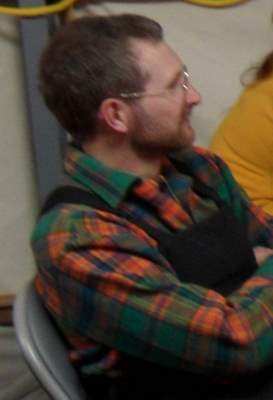John Stone is the principle investigator (PI) for our project, I-414. The National Science Foundation (NSF) grant was awarded under his name and proposal.

John has nine seasons in Antarctica under his belt. He has been down here just nine seasons because he is so busy with dating projects all over the world. He has been on research teams doing erosion rate studies in Brazil; dating of ancient volcanic eruptions in Hawaii and the Canary Islands; and glacial history in Australia, Scotland, and various locations around North America.
His first season was in 1991. He was working with Australian Antarctic Department in the Vestfold Hills of eastern Antarctica. Their project was on the glacial history and retreat of glaciers during the Last Glacial Maximum (LGM). John was with the research team in the role of using exposure dating to determine the age of retreat, just like he is doing here on the Beardmore GlacierA mass of ice that persists for many years and notably deforms and flows under the influence of gravity.. With this project, the team also extracted cores taken from ancient glacial lake beds. Other projects he's worked on in Antarctica have been a season in the Dry Valleys drilling deep cores of rock to calibrate their exposure dates. He's also worked on drilling ice cores for dating in Antarctica's Beacon Valley.
Next year will be the final year in this cycle of NSF funding and current grant. John will return to this same region, but will be sampling deposits from the Last Glacial Maximum (LGM) at sites along the Shackleton GlacierA mass of ice that persists for many years and notably deforms and flows under the influence of gravity. one mountain range east of the Beardmore GlacierA mass of ice that persists for many years and notably deforms and flows under the influence of gravity.. He feels that after this project, the assemblage of sampled dates should pretty well define the LGM for the Ross Sea/Ice Shelf. Eventually, he'd like to begin a similar project trying to constrain the dates of the LGM for the Weddell Sea.

John obtained his bachelor's degree in geology and geophysics from Sydney University in Australia in 1982. From there, he went directly into a Ph.D. program at the University of Cambridge in England. In 1986, he completed his dissertation in geochemistry. He was involved in two post-doctoral programs, one at the University of Chicago and the other at CalTech prior to being at the University of Washington.
He grew up in Canberra, Australia and lived for three years during high school in Washington, D.C. where his father was transferred by the International Monetary Fund (IMF). He is married to Cathy, and they have two children. When not studying glaciers around the world, he enjoys photography. Several of the photos in my journal entries and PowerPoint presentations have been taken by John during his many trips around Antarctica


Comments